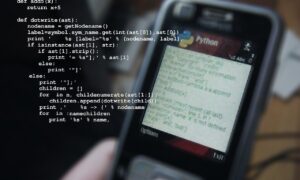Telegram has become one of the most popular instant messaging platforms in recent years. With its growing user base, Telegram has also become an attractive platform for developers to create custom bots. This article will show you how to create simple Telegram bots in Python. By the end of this article, you will have a solid understanding of how to build Telegram bots and how to deploy them to the Telegram platform.
Introduction to Telegram Bot
A Telegram bot is a program that interacts with users on the Telegram platform. Bots can be programmed to perform various tasks, from answering simple questions to performing complex operations. Some popular Telegram bots include weather bots, news bots, and language translation bots. These bots can be created using various programming languages, including Python.
The Benefits of Telegram Bots
Telegram bots offer a number of benefits for users and developers. For users, Telegram bots provide a convenient way to access information and perform tasks without leaving the Telegram app. For example, a weather bot can provide users with current weather conditions and forecasts.
For developers, Telegram bots provide an opportunity to create unique and innovative applications that can be easily distributed to a large audience. Additionally, Telegram bots are easy to create and maintain, which makes them an attractive option for developers who are just starting out.
Setting Up Your Development Environment
Before you can start building Telegram bots in Python, you need to set up your development environment. This involves installing the necessary software and libraries.
The first step is to install Python, if you don’t already have it installed. You can download the latest version of Python from the official Python website.
Next, you need to install the Python Telegram Bot library. This library provides a simple and easy-to-use interface for interacting with the Telegram Bot API. You can install the library using the following command:
pip install python-telegram-bot
Getting Started with Telegram Bot Development
Once you have set up your development environment, you are ready to start building Telegram bots. The first step is to create a bot account on the Telegram platform.
To create a bot account, you will need to talk to the BotFather, which is a bot that helps you create and manage Telegram bots. You can find the BotFather by searching for it in the Telegram app or by visiting the following URL: t.me/BotFather.
To create a new bot, simply send the BotFather the “/newbot” command. The BotFather will then ask you for a name for your bot and a username. The name of your bot will be displayed in users’ contacts, while the username is used to identify your bot in the Telegram platform.
Once you have created your bot account, the BotFather will provide you with an API token that you can use to access the Telegram Bot API. This token is the key that allows your bot to interact with users on the Telegram platform.
Building Your First Telegram Bot
Now that you have created your bot account and obtained an API token, you are ready to start building your first Telegram bot.
The first step is to import the necessary libraries and initialize the bot. You can do this with the following code:
import telegram
from telegram.ext import Updater, CommandHandler
def start(update, context):
context.bot.send_message(chat_id=update.effective_chat.id, text=”Hello, I am your Telegram bot.”)
updater = Updater(token=’YOUR_BOT_
TOKEN’, use_context=True)
dispatcher = updater.dispatcher
start_handler = CommandHandler(‘start’, start)
dispatcher.add_handler(start_handler)
updater.start_polling()
In this code, we first import the necessary libraries, including the `telegram` library and the `Updater` and `CommandHandler` classes from the `telegram.ext` module.
Next, we define a `start` function that sends a message to the user when the `/start` command is received. This function takes two arguments: `update` and `context`. The `update` argument contains information about the update received from the Telegram platform, while the `context` argument provides access to the bot’s context.
After defining the `start` function, we initialize the bot by creating an `Updater` object and passing it the API token for our bot. We then create a `dispatcher` object, which will be used to handle updates received from the Telegram platform.
Finally, we create a `start_handler` object, which will be used to handle the `/start` command. We add this handler to the dispatcher using the `add_handler` method, and then start polling for updates by calling the `start_polling` method on the `updater` object.
Deploying Your Telegram Bot
Once you have completed building your Telegram bot, you are ready to deploy it to the Telegram platform. To deploy your bot, you simply need to run the Python script that contains your bot code.
It is important to note that Telegram bots run 24/7 and require a constant connection to the Telegram platform. Therefore, you will need to deploy your bot on a server or host it on a cloud platform to ensure that it is always available to users.
Conclusion
In this article, we have shown you how to create simple Telegram bots in Python. We have covered the basics of Telegram bot development, including setting up your development environment, creating a bot account, building your first bot, and deploying your bot to the Telegram platform.
With the knowledge and skills you have gained from this article, you should now be able to create your own Telegram bots and start building your own unique and innovative applications. So go ahead and start experimenting with Telegram bots today!



































